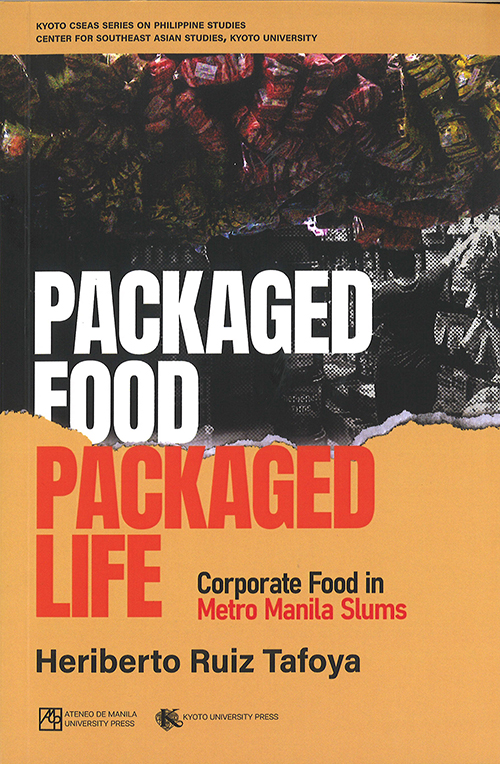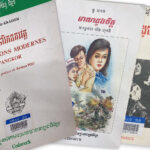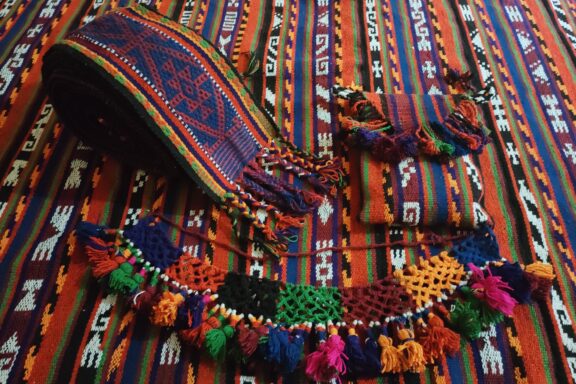Heriberto Ruiz Tafoya (Political Economy)
The purpose of this article is to present the relevant contributions of the book Packaged Food, Packaged Life: Corporate Food in Metro Manila Slums to an audience composed of academics, activists, government officials and any other social actors who frequently interact with slums[1] in the Philippines, Southeast Asia or other countries in the Global South.
The book itself has three main objectives: The first is to make clear why dozens of food brands—in sachets, bottles, cans and other packaging—are sold in all market spaces in Metro Manila’s slums. The intention, however, is to provide an answer that goes beyond those general explanations that claim that people simply consume them because they can afford them or that this is a result of individual lifestyle choices. Specifically, I argue that the abundant consumption of corporate brands in slums is the result of historical circumstances in which constrained living conditions and limited opportunities for people to flourish as human beings facilitate the supply of corporate packaged food[2] to the poor.
The second purpose is to show the social and food-related constraints that characterize a “packaged life” not as a definitive status but as an ongoing process. I define packaged life as a process that is related to the consumption of industrialized food that damages our vital spirit that animates our well-being (Ginhawa[3]), and affects nature and/or limits our flourishing as human beings, thus our living well, a life in plenitude (Buen Vivir[4]).
The third purpose is to use these ethical proposals of Buen Vivir and Ginhawa not only for the critique of corporate food retailing and consumption, but also to include them within a proposal to cut or divert the process of “packaging life.”
Background
In the late 1980s, following the collapse of the Soviet Union and the global expansion of neoliberal thinking, corporations’ goals of expanding their markets to allocate their growing output of manufactured goods bifurcated with inner-city desires for branded food (Winson 2013; Prahalad 2005). From the business side, there was intense advocacy to profit from the poor since the publication in 1989 of Hernando de Soto’s book The Other Path: The Invisible Revolution in the Third World. In this work, based on information from the slums of Lima, De Soto signaled wealth among the poor, as they could pay double or triple the market price for water and utilities outside the slums. This idea was further expanded by the thesis on “the fortune at the bottom of the pyramid” (Prahalad 2005). The argument, and the implicit invitation to companies to capitalize on it, was that there were 4 billion people earning less than $2.99 a day and willing to consume products and services that are adequately delivered to them. In the Philippines, Yakult, Ajinomoto, Nestlé, and Unilever would become some of the companies that implemented specific programs to support entrepreneurs that retailed their products in low-income neighborhoods.
From the consumer side, although the presence of branded foods in people’s minds via billboards and mass media has existed since the late nineteenth century, the amount of corporate products retailed in slums has incisively grown since the 1990s. Their presence in sari-sari stores clarifies this. In the late 1970s, less than 10 percent of the profits of a sari-sari store in an urban poor neighborhood were related to branded food and beverages (Silverio 1975), while in the late 2010s, this proportion rose to 54 percent (Ruiz-Tafoya 2018).[5]
Packaged Life
In Metro Manila, the dominance of sari-sari stores by capital[6] has been strategic as they are embedded in the alleys and crossing points of the slums. However, the circuit of the corporate packaged food goes beyond, and it also covers carinderias (eateries)—which often use industrialized condiments in their culinary processes, and have a sari-sari store as a side business—street markets, hawkers, public markets, medium-sized grocery stores, warehouses, pharmacies, convenience stores, and above all, supermarkets. In Malate, for example, Puregold San Andres is located just 50 meters from one of the main entrances to the Dakota squatter site, and serves as a source of supplies for sari-sari stores and/or direct retailer of packaged foods to families able to buy in bulk.
The expansion of food retailing in slum markets and symbolic spaces (media advertising and social networks) has gradually changed people’s food practices: cooking, eating, buying, and selling. In each of my six study areas—Dakota, Tatalon, Payatas, Kasiglahan, Libis, and Gugol—there are examples of people reselling branded foods. These are purchased from supermarkets or wholesale markets, as well as heads of households with less desire to cook, as they may prepare breakfast, lunch, or dinner with packaged foods often mixed with rice, eggs, vegetables, or tubers.[7] Additionally, a large amount of snacks, packaged breads, cookies, candies, chocolates, 3-in-1 coffees with abundant amounts of sugars and artificial fats, and soft drinks are consumed on a daily basis.
As a result of this, it is now common to see both malnourished and obese children, youth, and adults. Other implications are environmental problems, not only because more plastic and non-recyclable materials flood the streets and landfills, but also because people’s alienation from nature is being reinforced. Most slum children are unaware of the natural process of food production, and worse, their taste buds have been reworked by artificial flavors.[8] Symbolically, the brand names of milk, cocoa, juices, cereals, meats, etc., are well known and the consumption of some brands carries a greater social status than others. In contrast, the consumption of indigenous vegetables and fruits such as bananas (saging or saba) have a symbolic connection to poverty; consequently appreciation for the work of rural farmers gradually fades away.
The Covid-19 pandemic also demonstrated, to a great extent, the power of corporations over slum dwellers. First, packaged food was used to alleviate the hunger of thousands of families who received donations or government assistance. Second, government regulations and all mechanisms in the hands of the police and military were used to ensure that factories, warehouses, and supply networks were operating “normally” to supply packaged food to the population. And third, several web apps and online platforms to distribute food were launched not only by companies, but also by citizens themselves. These events provided an indication of the extent to which corporate packaged food has penetrated the common sense and practices of everyday life in Metro Manila.
In short, with such a detailed body of substantiated information, I set out to show, throughout the book, the inextricable relationship between corporate food consumption and the restricted living conditions and limited opportunities for the poor to flourish as human beings—physically, socially and mentally through regular contact with nature. Limitations that I termed “packaged life”: not as a defined status but as an ongoing process.
Unpacking from the bottom
Pandemics, epidemics, and frequent environmental calamities make packaged foods necessary for slum populations; however, relying on corporations is not. There are other nuanced possibilities for the production and use of packaged food by state agencies and organized neighborhoods that can deviate from the current detrimental path. In South America, for example, the ethical principles related to Buen Vivir were adopted by some governments even at the constitutional level to transform ministries, institutions, and programs for the benefit of disadvantaged producers and consumers; and in Mexico, where constitutional changes were not possible, there are still examples such as the caracoles Zapatistas in Chiapas, where autonomous communities are able to produce, package, distribute and exchange their Zapatista packaged food (e.g., coffee, honey, jams and semi-processed grains, seeds, fruits and vegetables). In the urban context, not only does state-packaged food (Liconsa) circulate at low prices, but also semi-processed food linked to ancestral traditions (Aztec, Mixteca, Totoneca, Zapoteca, Maya, etc) is packed and distributed by organized groups (colectivos) for their own benefit.
In the Philippines, similar initiatives emerged with some regularity after the Covid-19 pandemic. However, it is necessary to strengthen these initiatives within the well-rooted ancestral perspective provided by Ginhawa (a vital energy and source of well-being) and the philosophy of Kinilaw based on three principles: food as it is, freshness and sourness[9] to unpack life from the bottom.
Notes
[1] Despite the negative connotations of the word “slum,” the book is not intended to criticize or insult people, but to criticize the circumstances, mostly structural, that cause their difficult living conditions.
[2] Corporate packaged food (CPF) includes packaged, canned, and bottled foods, beverages, condiments, and fats. Unlike other related concepts such as (ultra) processed food, manufactured food, junk food, convenience food, etc., it specifies the use of a corporate brand on the package, sachet, can, or bottle.
[3] Ginhawa is originally a Cebuano term with several meanings, including breathing and vital spirit. The anthropologist Zeus Salazar explains its meaning as the human being’s life force, its physical location in the human body “has its seat somewhere in the intestinal region…the term ‘guinhaoa’ means ‘stomach, and the pit of the same stomach; to live, to breathe, respiration, vital spirit; metaphorically, what is taken upon eating for being that which, with nutrients, give life to all living things” (Quoted by Doroja 2010, 12).
[4] Buen Vivir, living well, life in plenitude, good life, etc., is a set of ethical and political principles that responds to the abusive extraction of natural resources from Mother Earth to sell them on the world market. The principles also include qualitative aspects of life that cannot be fully measured but are practiced for the well-being of people, such as acting in solidarity, respect, care, affection, and helping others or while trying to establish harmonious relationships between human beings and nature. All of them are part of what Gudynas (2011) calls “the substantial form of Buen Vivir.”
[5] Today, alcohol, cigarettes, and other packaged products such as shampoo, soaps and creams complement the total amount of profits.
[6] The domination of stores by capital implies not only the growing dependence on the production and supply of large corporations, but also transformations in the social relations of consumption, in this case, within slums. See more in Fine et al. (1996), Veraza (2008) and Ruiz-Tafoya (2018).
[7] Mixed dishes are often prepared using noodles and packaged or canned sausages, luncheon meats, corned beef, meatloaf, hamburgers, spam, sardines, mackerel, or tuna.
[8] This phenomenon has previously been observed in middle/lower class consumers in the West (cf. Fine et al. 1996). However, comparatively, the impact on most slum consumers is more dramatic, as most of them would be less likely to have access to health services, education, infrastructure, and resources (including land, water, knowledge, utensils, methods, and energy sources) to practice gardening, cooking and consuming a wider variety of non-industrialized foods.
[9] According to Alegre and Fernandez (1991), kinilaw, preparing and eating raw and sour food, is rooted in the ancient, millenarian traditions of the Philippines, from Batanes to Tawi-tawi, and it is the base of philosophy with three pillars: 1) Food as it is, the simple, harmonious and balanced encounter with nature and reciprocal social relations, 2) Freshness “is life in its dancing vibration . . . it connects us with the vital impulse of nature” (1991, 112); and 3) Sourness refers to “the process of cooking not in fire, but in liquid fire” and requires subtlety, patience, and sharing (1991, 113).
References
Alegre, Edilberto N. and Doreen G. Fernandez. 1991. Kinilaw: A Philippine Cuisine of Freshness. Bookmark.
Doroja, Danica Mariz A. 2010. “Life and Death: The Absence of Ginhawa as the Cause of Sorrow.” Unpublished undergraduate paper.
Gudynas, Eduardo. 2011. “Buen Vivir: Today’s Tomorrow.” Development 54, no. 4 (December): 441–47. https://doi.org/10.1057/dev.2011.86.
Prahalad, Coimbatore. K. 2005. The Fortune at the Bottom of the Pyramid. London: Prentice-Hall.
Ruiz-Tafoya, Heriberto. 2018. “Corporate Packaged Food in Slums: Market and Meanings at the Filipino Sari-Sari Stores.” Social Theory and Dynamics 2: 18-37.
Silverio, Simeon G. Jr. 1975. “The Neighborhood Sari-Sari Store.” Quezon City: Institute of Philippine Culture, Poverty Research Series No.2, Ateneo de Manila University.
Veraza, Jorge. 2008. Subsunción real del consumo al capital. Mexico City: Editorial Itaca.






